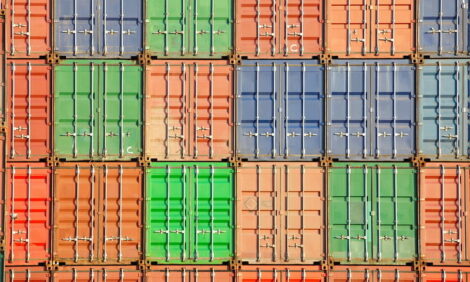



Hog market gains as China herd moves fuel export hopes - CME
Cattle futures plunge on heavy weights, import signals
Chicago Mercantile Exchange (CME) live cattle and feeder cattle futures dropped by the daily trading limit on Monday, as investors and funds scrambled to respond to a flood of bullish news, ranging from signs that US cattlemen are raising heavier animals to expectations for increased domestic beef imports, Reuters reported, citing analysts.
Hog futures found support as traders questioned the pace of China's hog herd culling, as any significant slowdown could open a door of opportunity for US exports, said market analysts. In CME's lean hog market, February futures finished the session up 1.475 cents at 79.175 cents per pound.
Meanwhile, cattle futures tumbled. CME February live cattle futures closed down 7.250 cents at 207.525 cents per pound, while most-active June live cattle was also limit-down 7.250 cents at 201.725 cents per pound.
January feeder cattle futures tumbled 9.250 cents to finish at 304.975 cents per pound, March feeders settled down 9.250 cents at 297.800 cents per pound.
Much of Monday's early-session slump was partly a delayed reaction to President Donald Trump on Thursday cutting the 40% tariffs on Brazilian food products, including beef, that he imposed this summer, said Karl Setzer, a partner at Consus Ag. The duties had slowed US imports of supplies used to make hamburger meat from the world's biggest beef exporter.
Traders were also responding to news released after markets closed on Friday that there were 11.7 million cattle on feed in feedlots as of November 1, down 2.2% from a year earlier, the US Department of Agriculture said in a monthly report.
While this was in line with analysts' expectations, the news also highlights the fact that the animals themselves were likely being held back from slaughter — and therefore weighing more when sold for processing, market analysts said.
"When placements were down 10% and marketing was down 8% — but those on feed numbers being just about 2% down? That's a sign that there are still a lot of cattle out there being fed," Setzer said.
Then, there was last week's announcement that Tyson Foods would close a major beef plant in Lexington, Nebraska, and reduce operations at another facility in Amarillo, Texas. Tight cattle supplies have raised costs for meatpackers.
Signs of a softening US labour market also weighed on cattle futures, as traders anticipate that demand for higher-priced cuts of beef may cool, analysts said. The jobless rate rose to 4.4%, its highest level in four years, from 4.3% in August, the federal Labor Department said last week.
For Tuesday's trading session, the feeder cattle futures trading limits will widen to 13.75 cents per pound and live cattle will expand to 10.75 cents per pound, CME said on its website.









